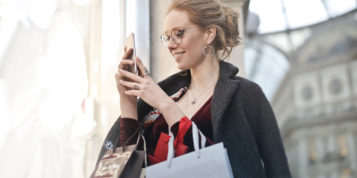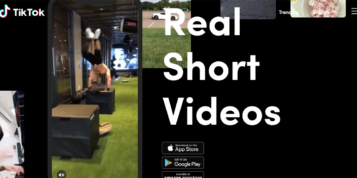We’re officially a constantly connected generation, with our smartphone cited to be more of a necessity to us than our partners. Now more than ever, the time is ripe for brands and retailers to exploit increased connectivity and offer shoppers more convenient ways to purchase. And those looking for innovations in the path to purchase would be wise to keep one eye on Instagram, which has pushed into the rapidly growing social commerce space with the launch of an in-app shopping function. Are we seeing the start of a new breed of consumer; one that is socially connected and therefore, socially spending?
There are already a number of established and emerging retailer apps on the market, from online fashion retailer Depop to florists Bloomon, specifically targeted at mobile commerce. However social platform Instagram getting in on the act could be revolutionary, bringing ‘shoppable photos’ to 500 million monthly users. Thanks to its vast reach and social prevalence, Instagram has the power to shift the way in which consumers shop online, particularly during key dwell times when consumers have the time and inclination to browse and buy.
In 2016, total m-commerce sales will account for £25.2 billion, an increase of more than 25% on the previous year, according to eMarketer. This shift is indicative of a trend in behaviour to be constantly switched on and ready to shop at the click of a button – positive news for advertisers.
Brands should also consider the busiest m-commerce times of the day. In 2015, a fifth of all UK online shopping sales took place during the daily commute, accounting for £9.3bn each year. The peak morning rush (7am – 9am) sees the biggest spike, when 1.5 million commuters are estimated to be shopping.
So we know when m-commerce consumers are purchasing, but what are they buying?
Fashion is top of the agenda. With visually led platforms like Instagram, we are more inclined to click the ‘purchase’ button, should we see Kate Moss wearing that coveted item from her new Topshop collection or an influential fashion blogger donning the most wanted boots of the season.
In a survey we conducted exploring this behaviour, we discovered that 62% of our research respondents regularly browse fashion retailer websites via a connected device, while 58% of them regularly make purchases through this medium. In addition to this, 25% use their connected device to browse fashion retailer websites on the train, while 18% use their device to buy from fashion retailer websites while travelling.
There’s also proof that consumers are increasingly browsing social networks for purchase ideas and inspiration. More than half (56%) of consumers who follow brands on social media sites say they do so to view products, according to research from Aimia.
But, to make an impact, advertisers need to think beyond social media advertising and look to more traditional channels.
Classic media, including print and out-of-home (OOH) still has a pivotal role to play and can provide a wide range of benefits not afforded by its digital counterparts.
In an age where we are bombarded by digital messaging and advertisement, classic media provides us with an opportunity to ‘switch off’ from the noise and ‘opt in’ to online nudges at a time and place of our choosing. This provides a number of benefits for both brand and consumer; the consumer has time to breathe and the brand respects our personal boundaries; integral to building brand loyalty.
OOH media is also proven to prompt action. Our research showed 55% of those who recalled seeing a Traincard campaign on-board carried out a specific action as a result.
Advertisers still need to build brand fame, something which OOH advertising is notoriously adept at. It also has the potential to remind people of a product when that product becomes available via a social platform; it can provide a teaser or a reminder, a powerful call-to-action. Above all else, classic media has the capability to plant a seed that will later grow into activation at a time and place of the consumer’s choosing, via a number of purchase paths.
As social commerce gains prominence within the retail sector, brands that adopt new technologies underpinned by classic media will reap the rewards.





